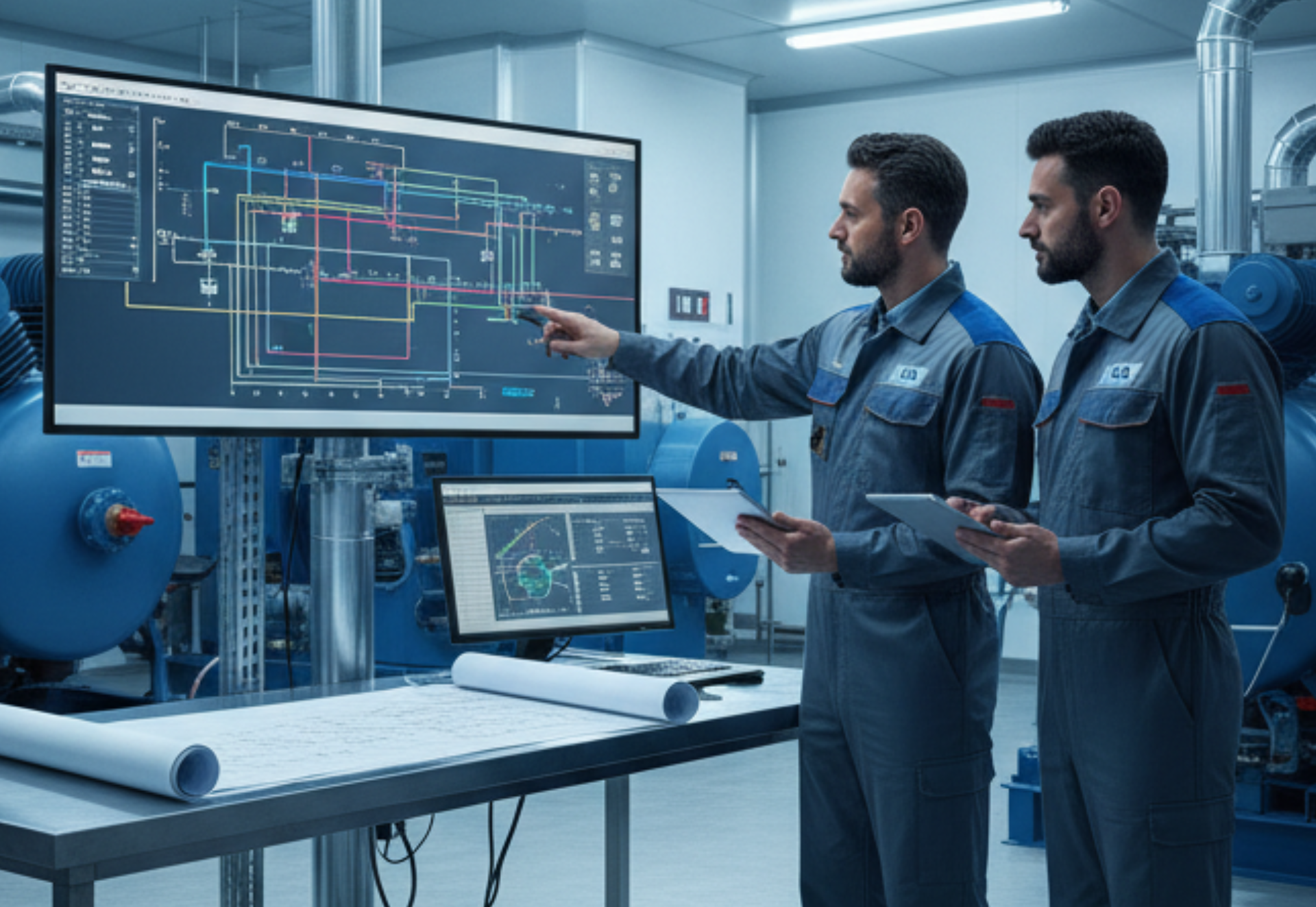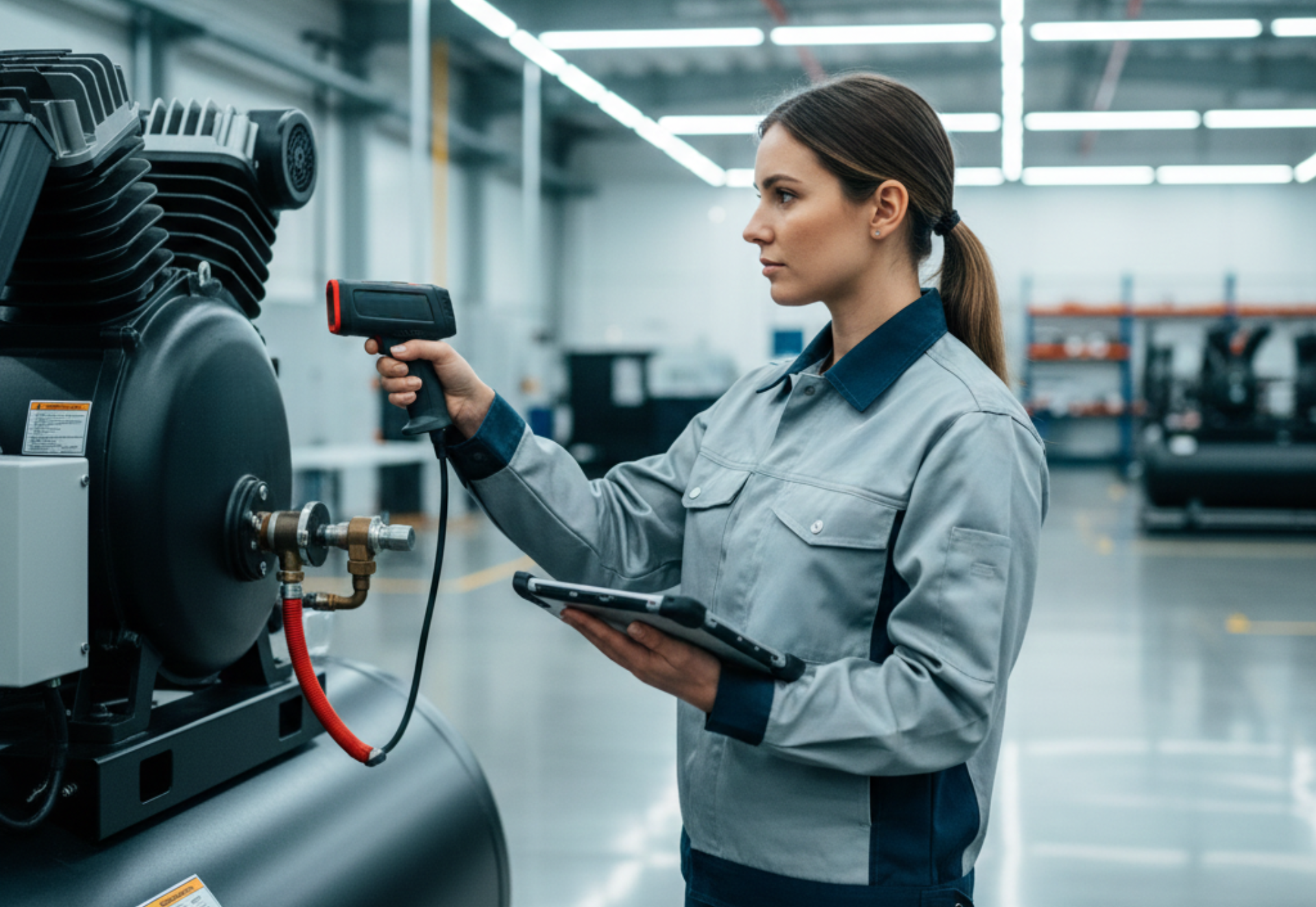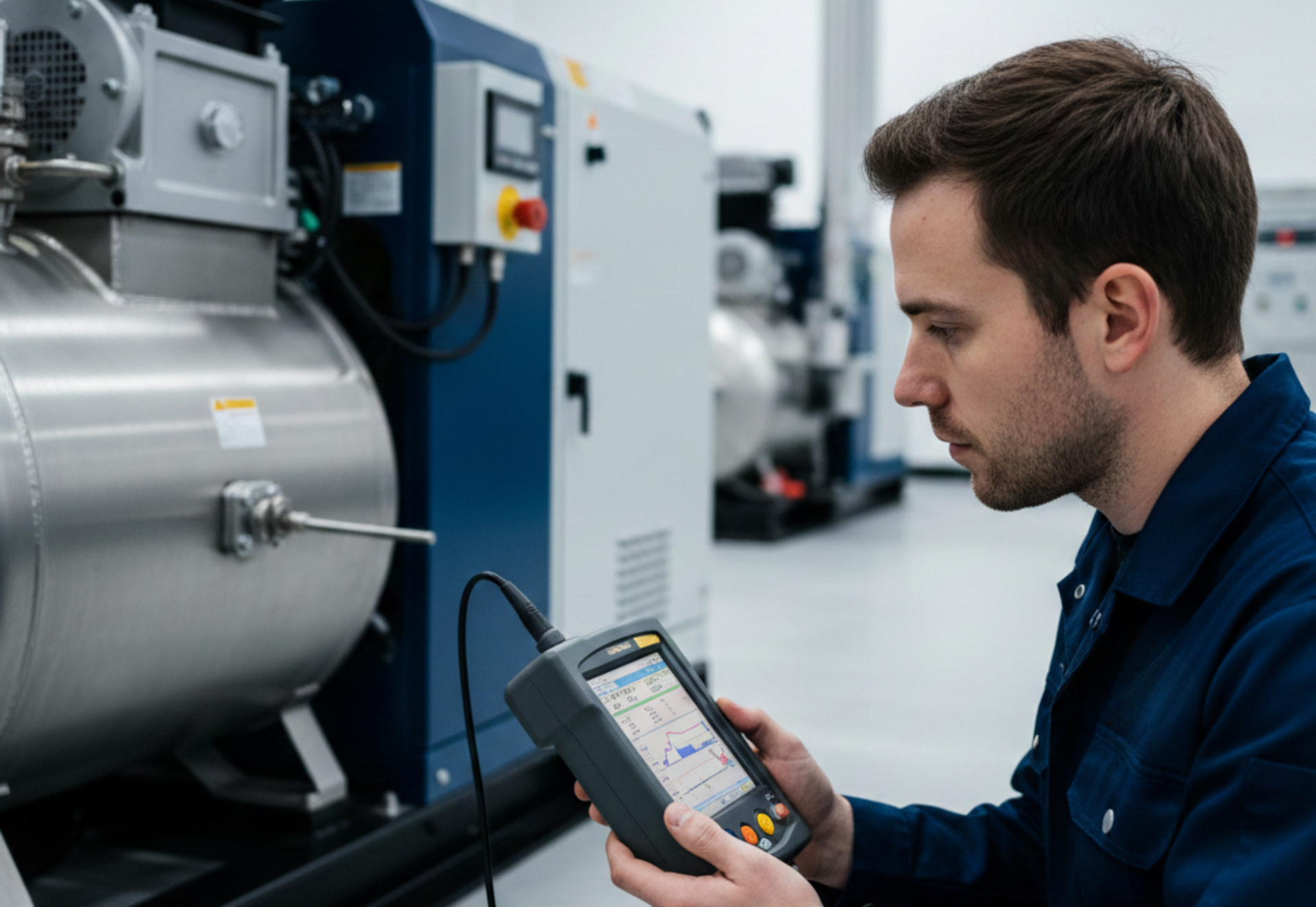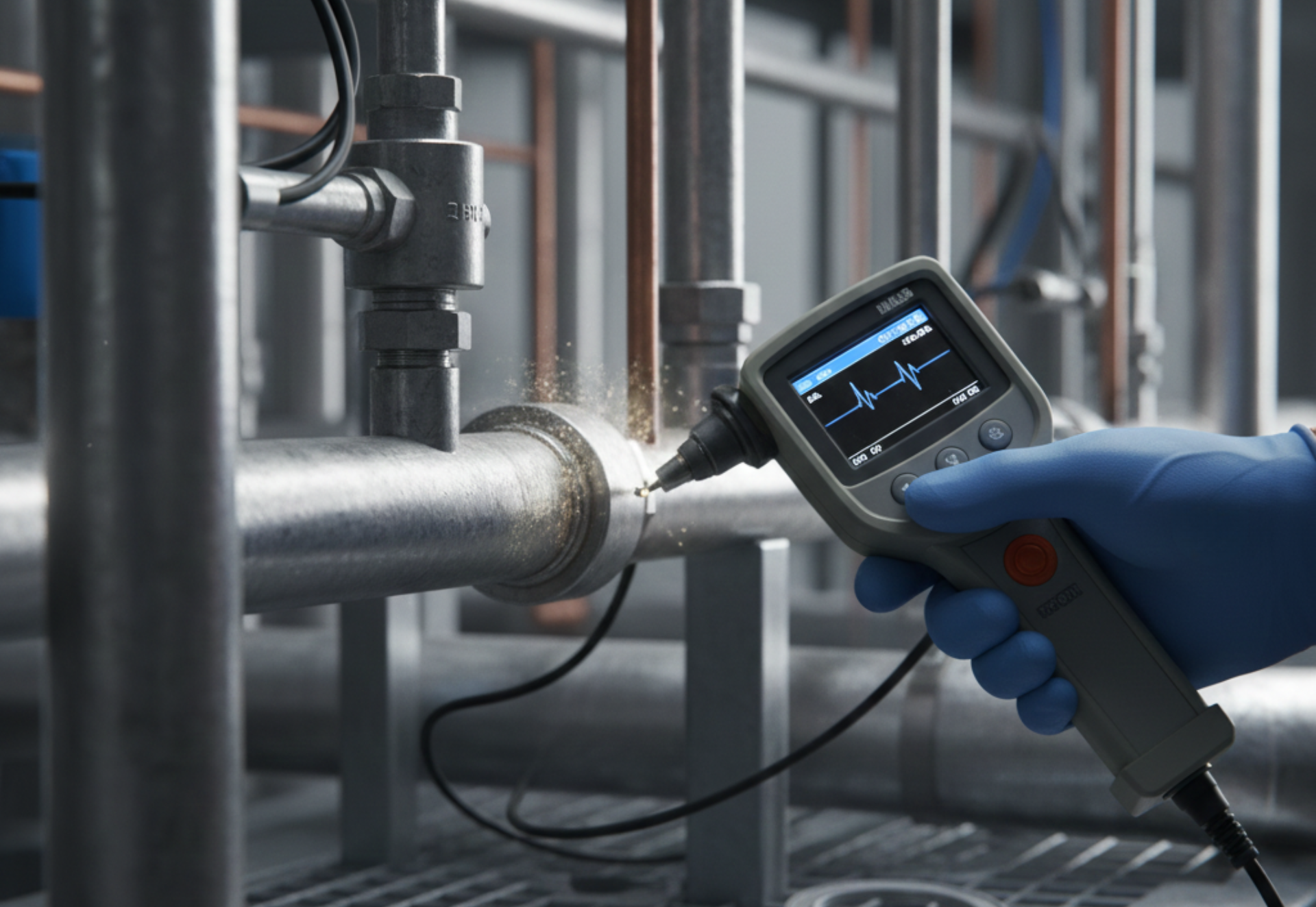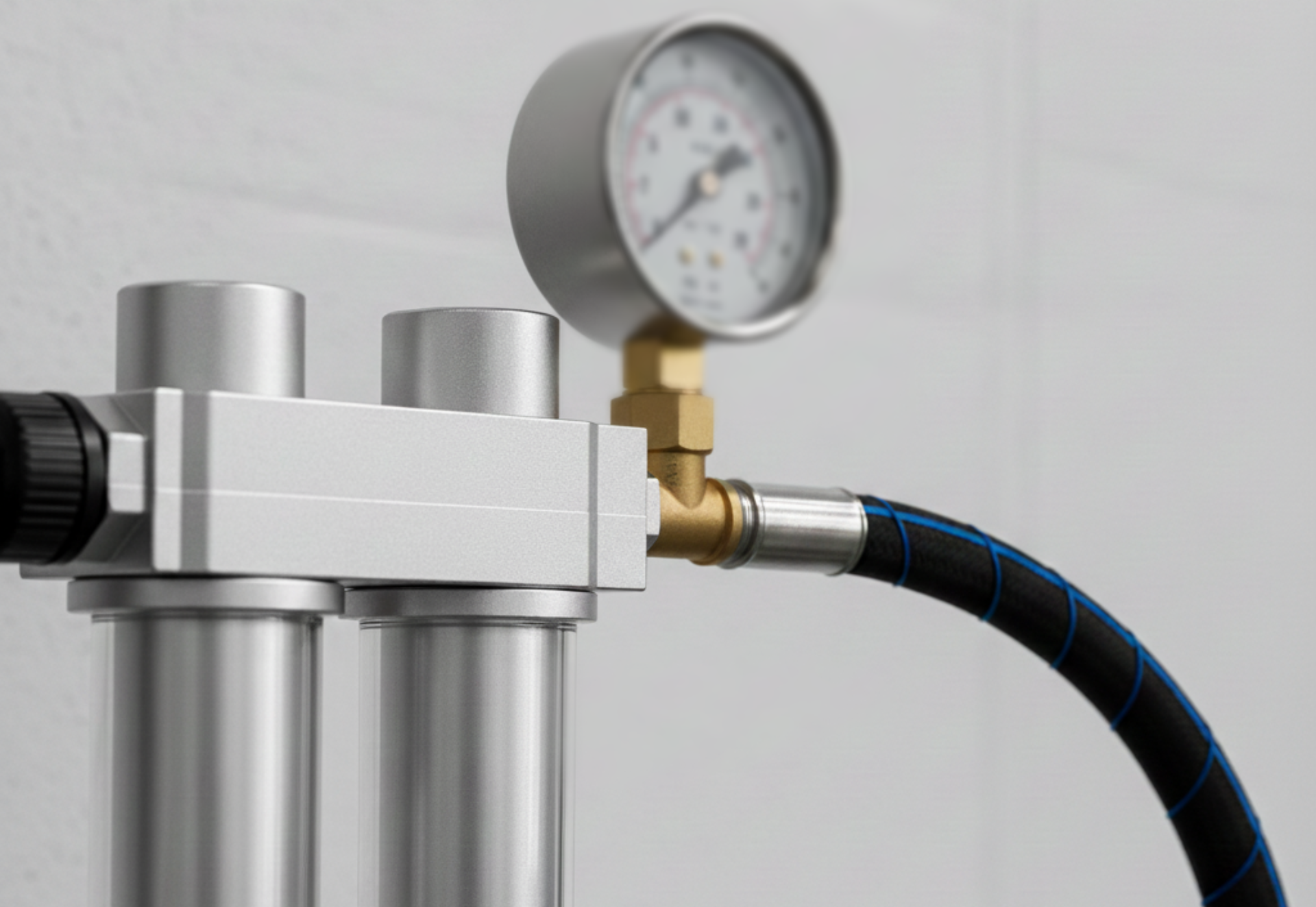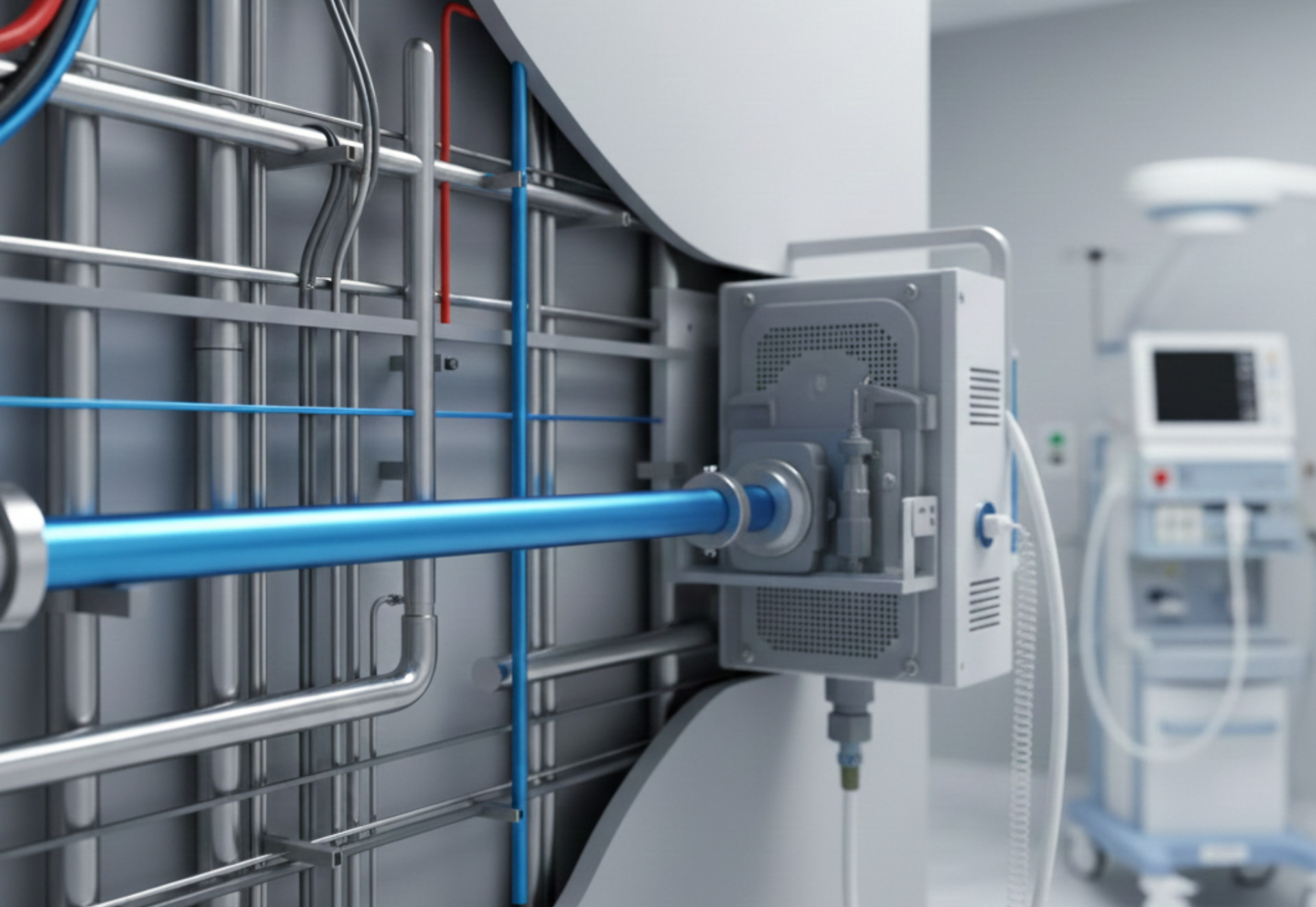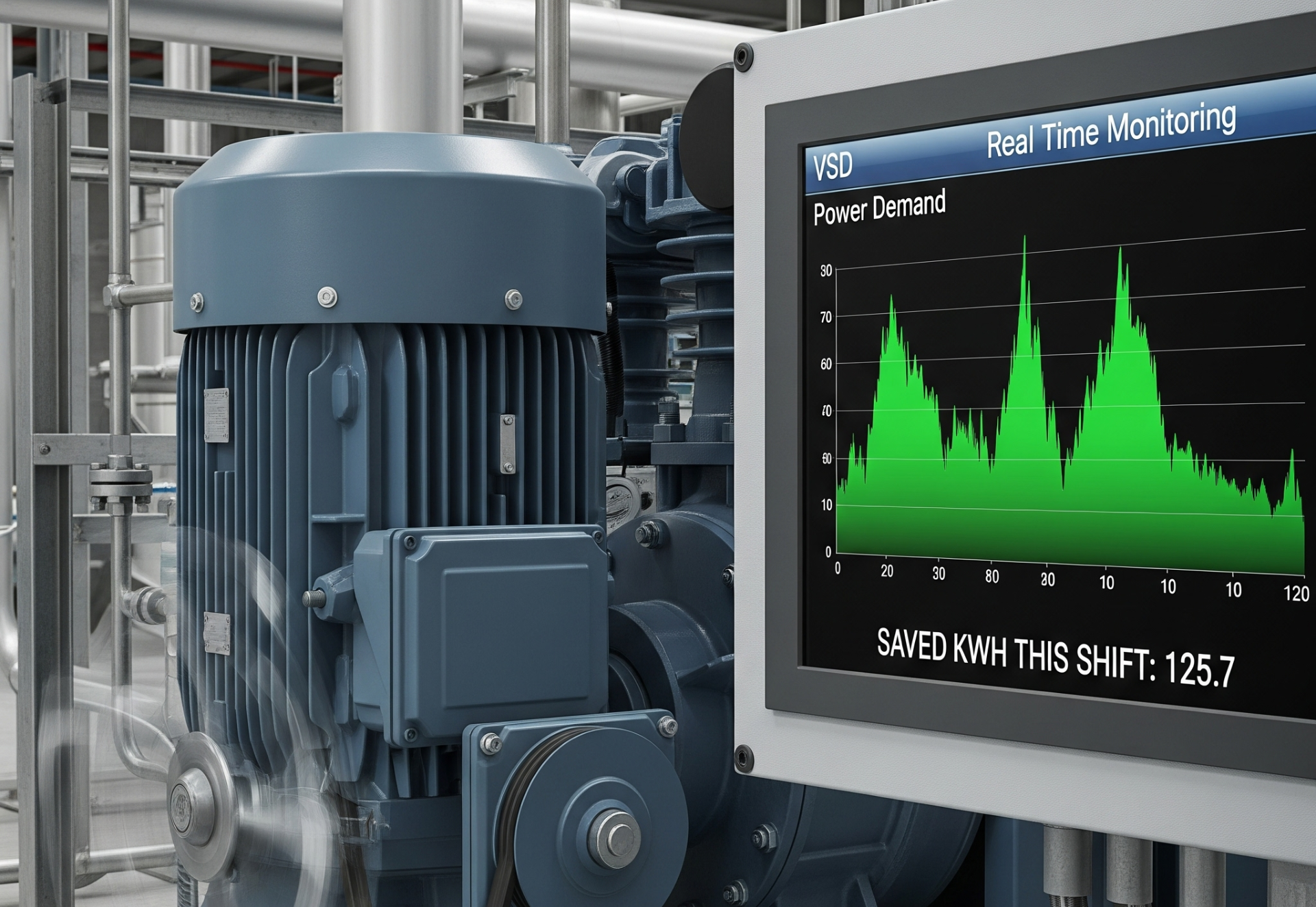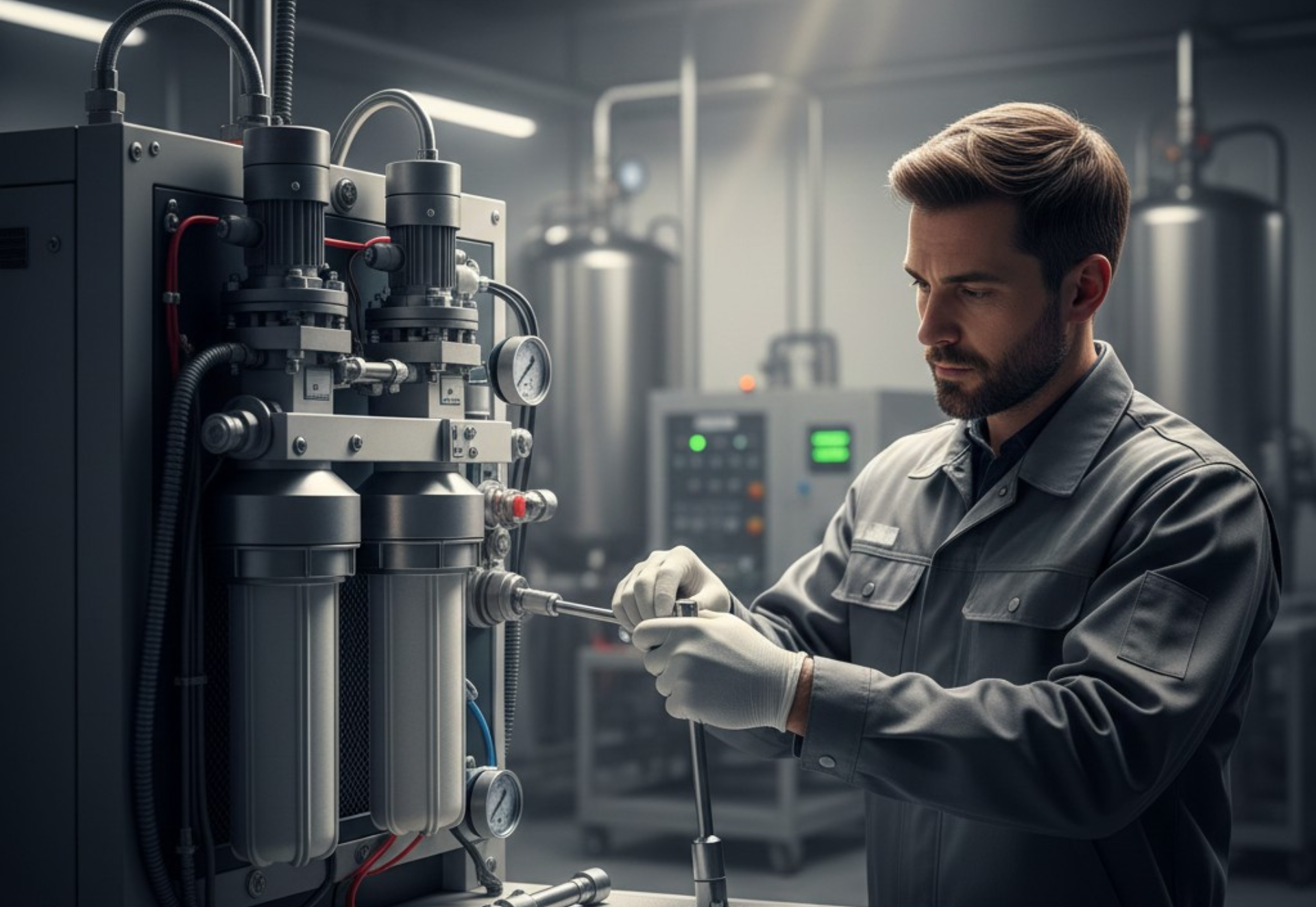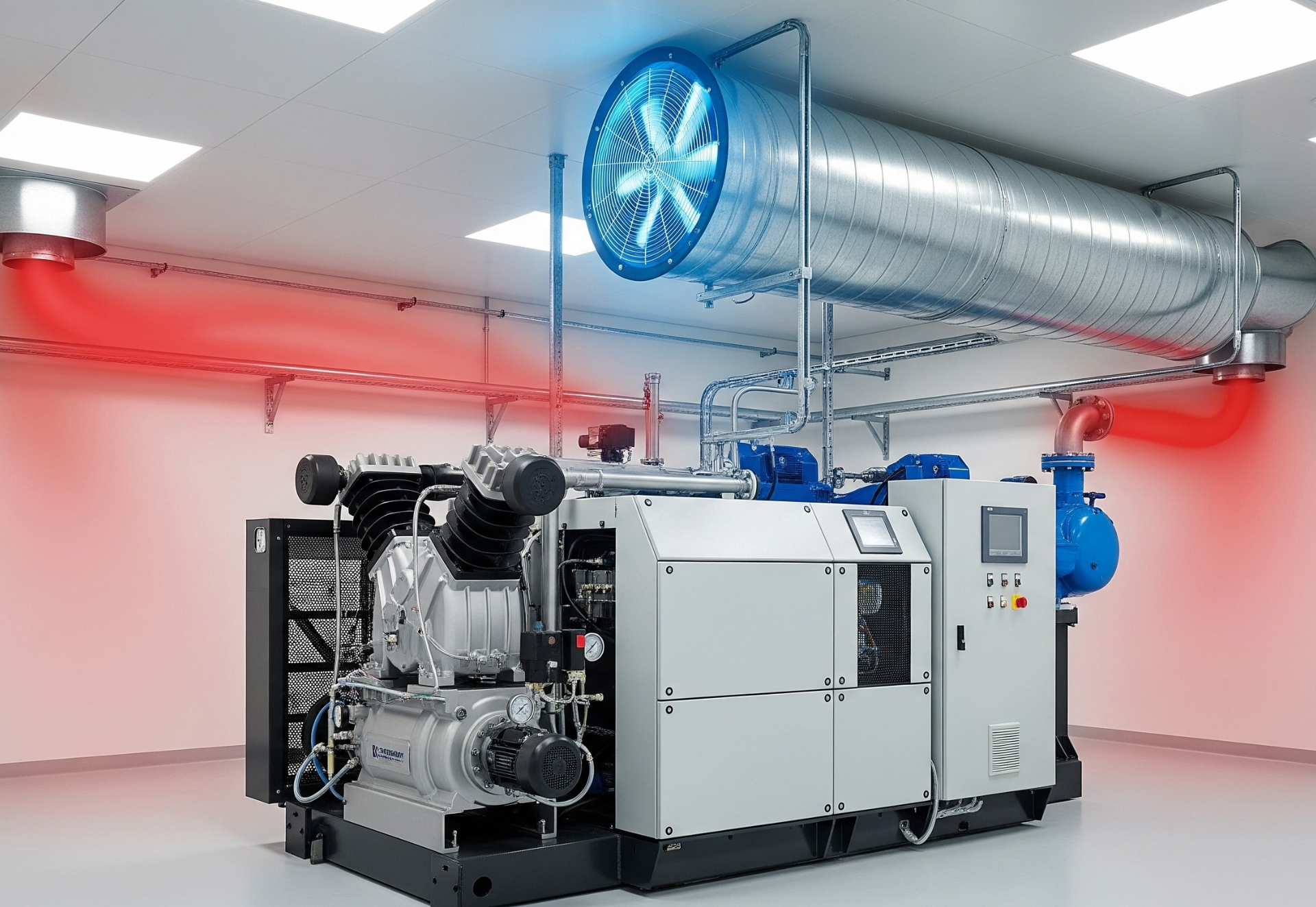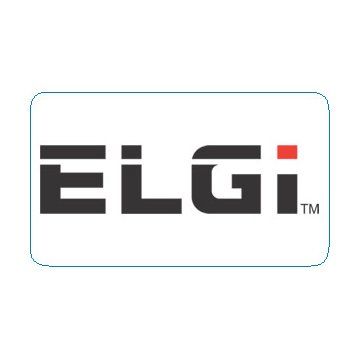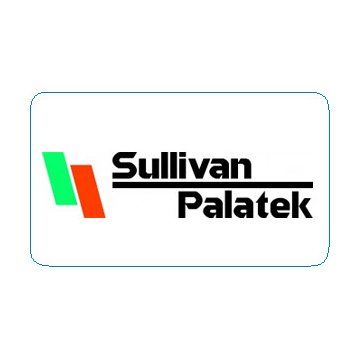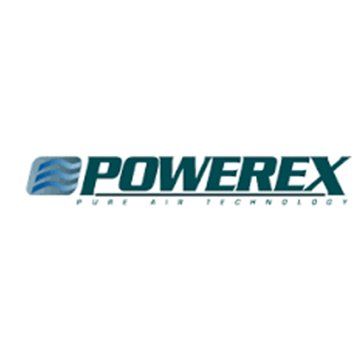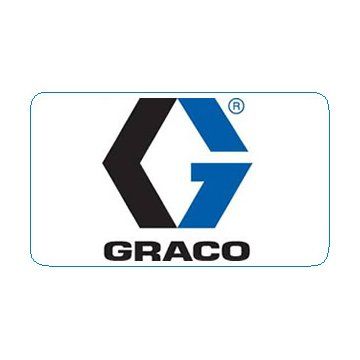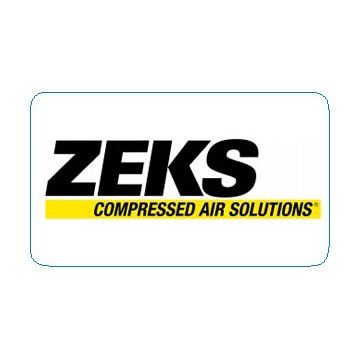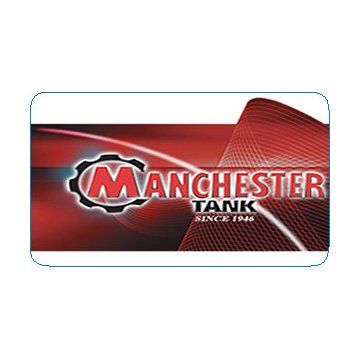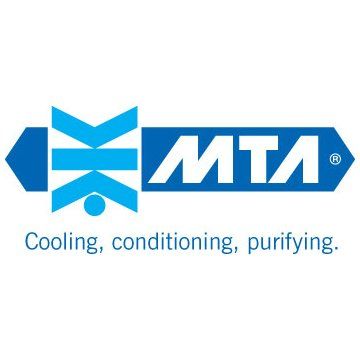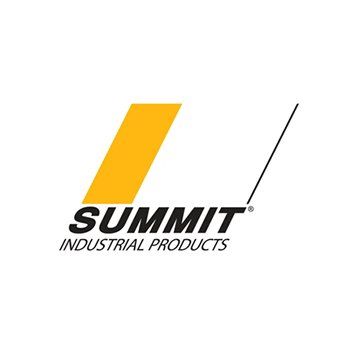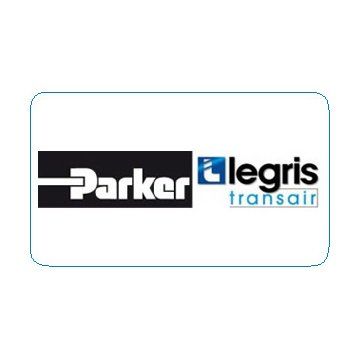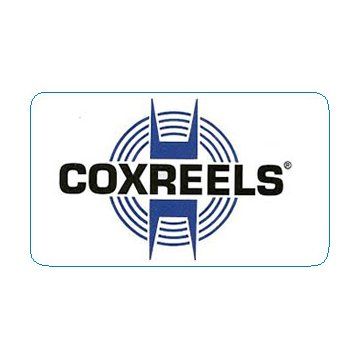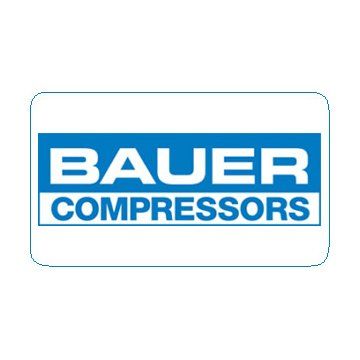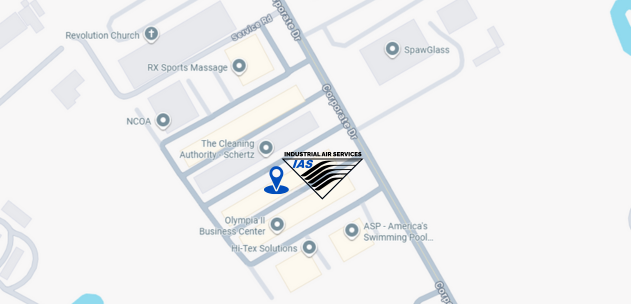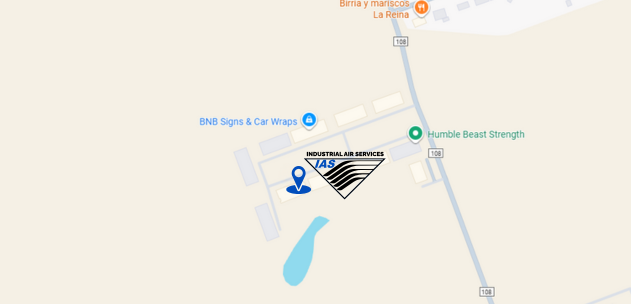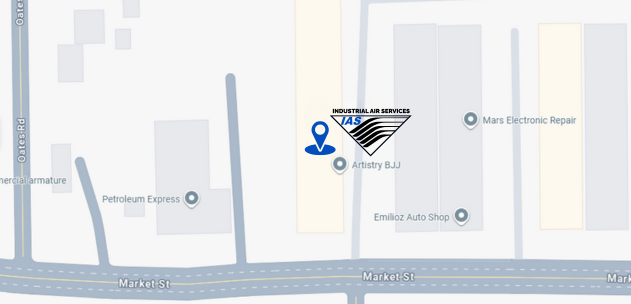Hot Air vs Traditional Heating: Choosing the Right Industrial Hot-Air Solution
Heating expansive industrial spaces, production halls, and processing zones presents a unique set of challenges that extend far beyond the installation of a standard HVAC unit. The decision between a modern hot-air heating system and more traditional heating methods, such as boiler/steam, hydronic, or radiant systems, is a critical one that can profoundly impact a facility's energy consumption, responsiveness, ongoing maintenance costs, and overall operational flexibility.
For instance, a compelling study highlighted that an industrial facility that transitioned from conventional steam radiators to modular hot-air units realized substantial cost savings of 32% on heating expenses. This significant reduction underscores the potential economic benefits of adopting modern hot-air solutions.
Refull
In this blog, we will conduct a comprehensive comparison of industrial hot-air systems versus traditional heating systems. We will meticulously detail their respective advantages and limitations, providing you with the necessary insights to ask the most pertinent questions when evaluating and selecting a heating system. Ultimately, our goal is to guide you toward making the optimal choice that perfectly aligns with your facility's unique layout, operational demands, and budgetary constraints.
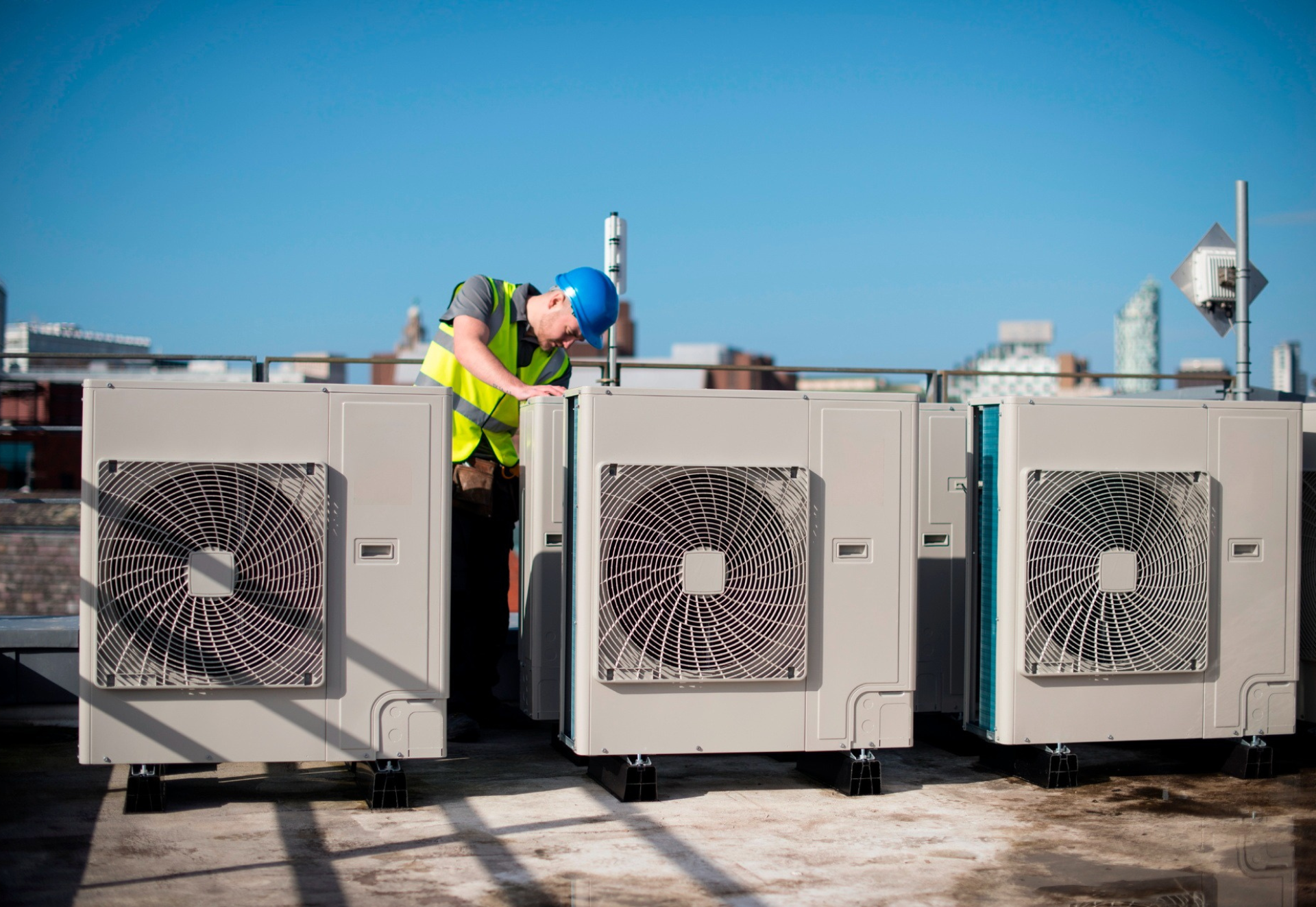
1. What Do We Mean by “Hot-Air Heating” vs Traditional Heating
Hot-Air Heating Systems
- These typically refer to systems that generate heated air (via a burner, electric heater, or heat exchanger), which is then delivered directly into the space (often via ducts/blowers or nozzles).
- They can be decentralized (unit heaters, blower heaters) or centralized with ducting and multiple distribution points. As one source states: “Decentralized warm air heaters … can have significantly better operating costs than a boiler system.” Climate & Heating Systems by Schwank
- Because they introduce heated air directly, they can warm a space more rapidly and allow for zone-based control (for example, treating different areas differently).
Traditional Heating Systems
- These refer to commonly used industrial heating methods, including boiler-based steam or hot-water systems, hydronic heating, radiant tube heaters, or infrared heating.
- For example, central boiler systems heat water or steam, which is distributed through pipes to convectors or radiators, and heat is transferred into the space.
- Traditional systems are widely used, especially where loads are continuous and where infrastructure is already in place.
Key Distinctions
- Heat delivery medium: hot-air uses forced air; traditional uses water/steam or radiant heat.
- Warm-up speed & flexibility: hot-air tends to be quicker and more flexible; traditional can excel at large installations with steady load.
- Energy losses & duct/radiator network: traditional systems may have longer pipelines, more distribution losses.
- Zone/space adaptability: Hot-air systems can more easily support zone heating and layout changes.
2. Advantages & Limitations: Hot-Air vs Traditional
Advantages of Hot-Air Systems
- Fast response time: According to one case study, a hot-air system reached target temperature 35-50 mins compared to 120-180 mins in steam or hydronic systems.
- Flexible installation & zone control: Good for production plants where layout changes, large doors open/close, or zones are frequently re-configured. For example, a Myanmar client used mobile blower heaters to adjust zones weekly.
- Lower upfront installation cost in some cases: Some hot-air modular or unit heaters offer lower initial cost compared to full boiler/hydronic systems.
- Reduced transmission losses: Without long piping or thermal transfer medium, hot-air systems can reduce heat loss when properly designed.
Limitations of Hot-Air Systems
- Ceiling height/stratification issues: In tall-ceiling buildings, hot air rises and may cause inefficient heating unless destratification or high-volume low-speed (HVLS) fans are used.
- Potential for air movement/discomfort: Forced-air may cause drafts, dust movement, or noise if the blower is high velocity.
- May be less suitable for very high-capacity continuous operations: Traditional systems may have robustness in large-scale, 24/7 operations.
- Energy efficiency context‐specific: If heat losses are uncontrolled or the insulation is poor, the benefit may diminish.
Advantages of Traditional Heating Systems
- Proven reliability, especially in legacy installations: Many manufacturing sites already have boiler/hydronic infrastructure.
- Precise temperature control & uniform heating in large spaces: Radiant/hydronic systems often provide stable, drift-free heating.
- Potential for heat recovery / large-scale integration: Central boiler systems may integrate with CHP, waste heat, district heating, etc.
For more in-depth, you can check this blog from Climate & Heating Systems by Schwank.
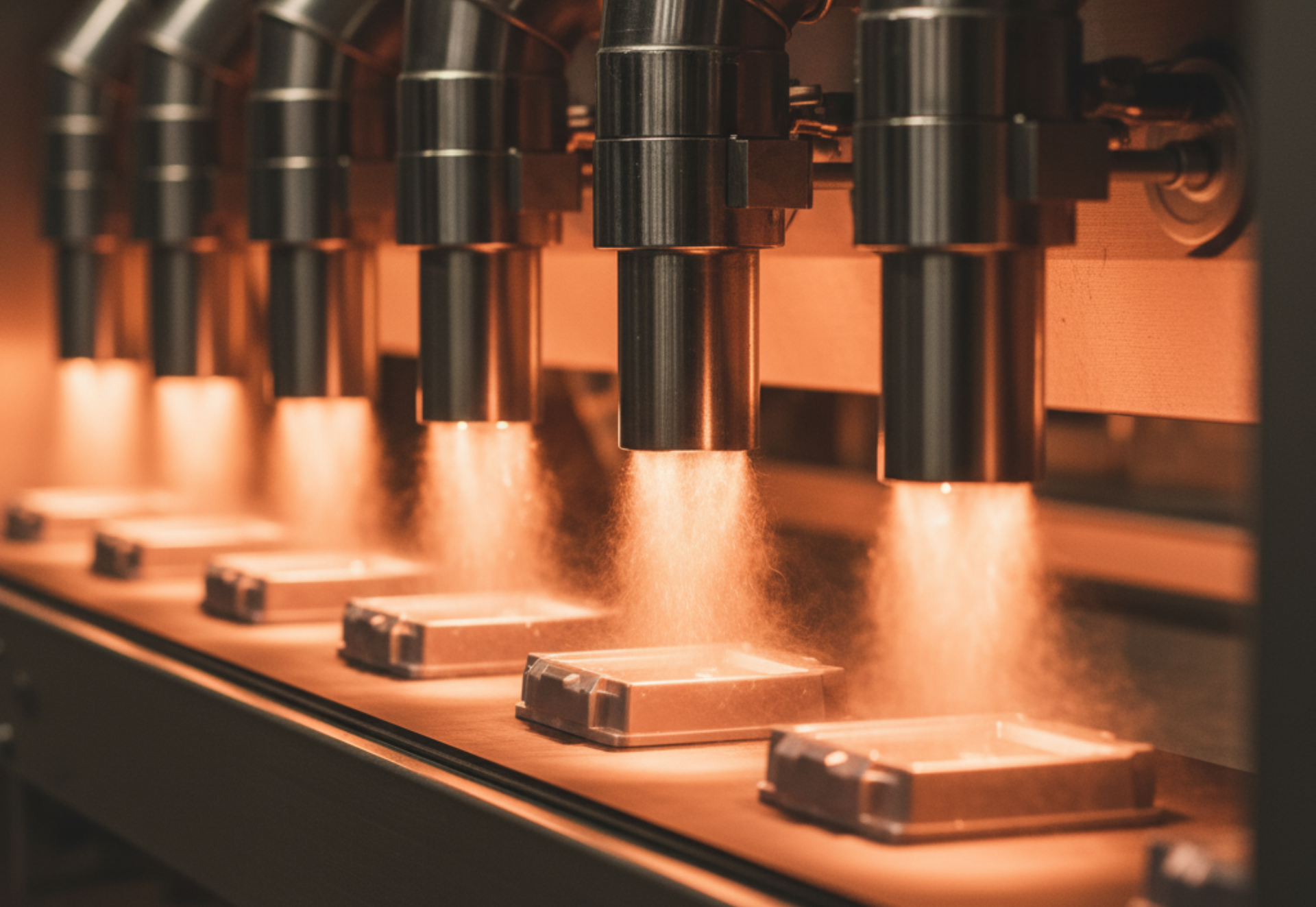
Limitations of Traditional Heating Systems
- Long warm-up/inertia: As data show, warm-up times may be 2-3× longer versus hot air.
- Higher upfront infrastructure cost: Piping, boilers, pumps, and controls all add cost.
- Less flexible zoning/layout changes: Once installed, it's harder to reconfigure.
Higher transmission or piping losses: Long pipelines increase losses and maintenance points.
3. How to Choose Between Hot-Air vs Traditional Heating for Your Facility
Here are key decision criteria to guide your selection:
a) Building / Facility Characteristics
- Ceiling height & geometry: If the facility has low ceilings (< 8-10 m) and minimal stratification issues, hot-air systems may perform well. If ceilings are very tall (> 12 m) or open with frequent door openings, consider radiant/traditional systems with better heat distribution.
- Zoning & layout flexibility: If your production layout changes frequently or you operate multiple small zones, hot-air modular units offer flexibility. If the layout is fixed and loads are uniform, traditional methods may suffice.
- Warm-up requirements: For applications requiring rapid heating (e.g., early shift startup, intermittent use), hot-air works better. For continuous operation 24/7, the slower but stable traditional system may still be acceptable.
b) Energy Source & Efficiency Needs
- Evaluate fuel sources (gas, electric, biomass) and possible renewables. Decentralized hot-air systems may better adapt to modular electric heating; traditional hydronic systems may integrate waste heat.
- Examine system efficiency metrics, ErP, or seasonal performance values. One source explained that decentrally installed warm-air heaters can achieve significantly better operating costs than a boiler system under certain conditions.
c) Lifecycle Cost & Maintenance
- Compare
Total Cost of Ownership (TCO): Purchase + installation + fuel/energy + maintenance + downtime.
- Use practical case comparisons: In one example, a hot-air system had a 5-year total cost of USD 58.4 k vs USD 63.1 k for a boiler system despite a higher energy draw because of lower installation cost and flexibility.
- Maintenance: hot-air systems may require more frequent inspections of blowers/fans and ducting; traditional systems require boiler servicing, piping inspections, water treatment, etc.
d) Operational Flexibility & Future-Proofing
- If your facility must adapt quickly to production line changes, zone heating, or new product lines, hot-air systems win in flexibility.
- If you anticipate staying with a fixed layout for many years, a robust traditional system may provide durability and predictable operation.
- Consider upward scalability: modular hot-air units are easier to scale; traditional systems can be scaled, but may require major infrastructure work.
Decision Checklist
- Is the space layout stable or changing frequently?
- What is the required warm-up time each morning or after shutdown?
- What are the insulation and envelope quality (walls, doors, roof)?
- What is the ceiling height, and how much stratification risk exists?
- Will operations be zone-based or uniform?
- What fuel sources and energy availability exist?
- What are the maintenance capabilities and service contracts available?
- What is the projected lifecycle: 5 yrs? 10 yrs? 20 yrs?
- Do you have budget constraints for upfront vs long-term costs?
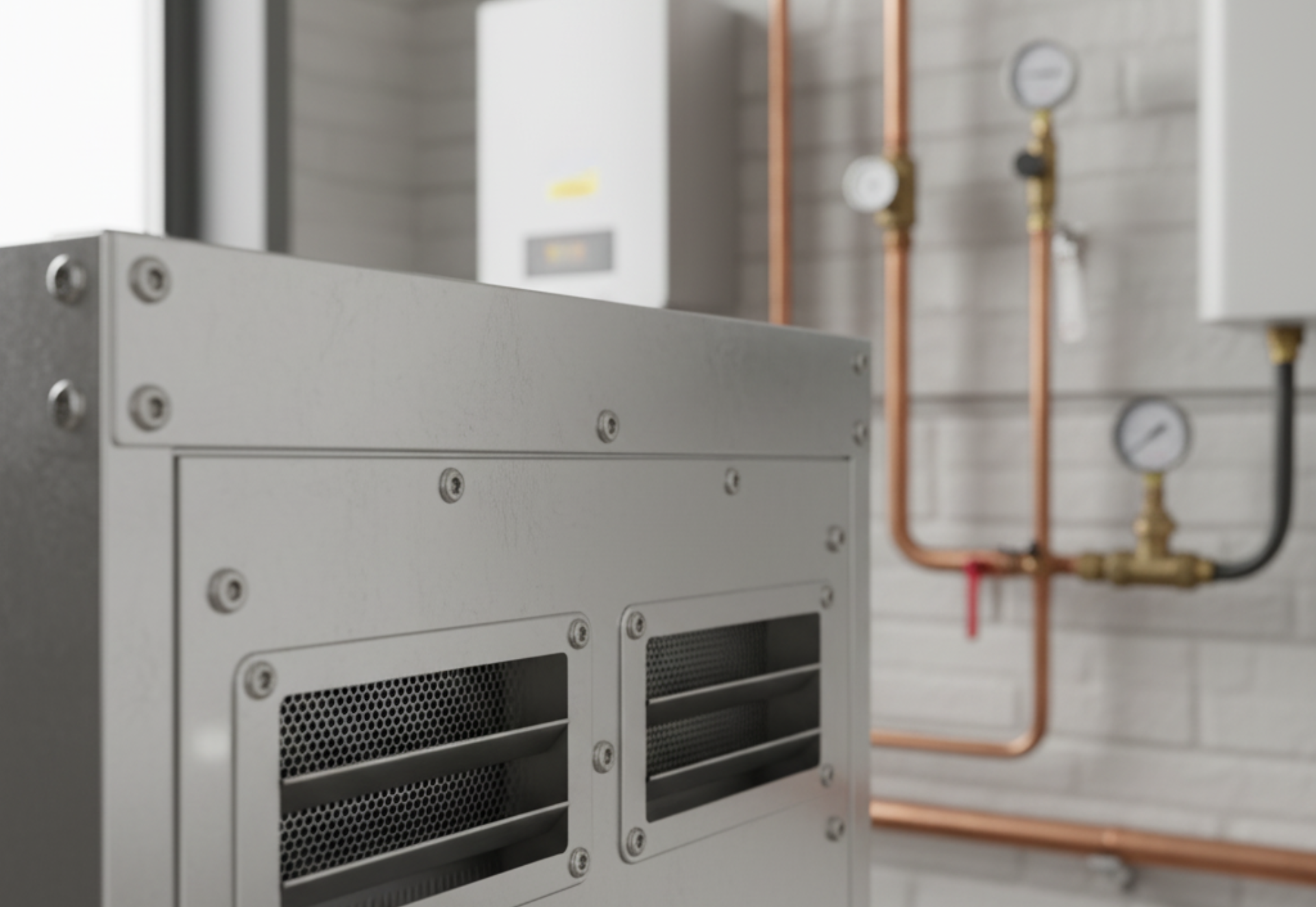
4. Case Examples & Real-World Insights
Real-World Insight: Speed Matters
One case from Southeast Asia found that a hot-air blower system achieved target temperatures in under 1 hour, versus over 2.5 hours for steam systems in a ~15,000 m² facility. This fast response allowed the plant to reduce idle time and get production started earlier each day.
Scenario: Layout Flexibility
According to Food Safety Magazine, a food-processing plant in Myanmar used portable hot-air units to reconfigure zones weekly and avoid major ductwork changes. Their flexibility allowed them to scale production for new product lines without a major heating-system overhaul.
Efficiency & Return-on-Investment (ROI)
A Vietnamese plant calculated that although their hot-air system consumed about 15-25% more energy per hour, the lower installation cost and faster recovery time resulted in a pay-back period of 2.3 years.
5. Best Practice Recommendations
- Ensure good insulation and building envelope: For hot-air systems, especially, heat loss through the roof/doors reduces effectiveness. If insulation is poor, consider radiant/traditional.
- Use destratification fans in tall-ceiling buildings to bring hot air down and avoid stratification.
- Consider modular heating units: For flexible production, zone heating, and scalability.
- Establish strong service & maintenance agreements: Whether hot-air or traditional, regular inspection and servicing maintain efficiency and longevity.
- Run a heating-load calculation: Understand your actual heat demand (kW or BTU) rather than oversizing. Use manufacturer or specialist engineering resources.
- Benchmark key metrics: Warm-up time, energy cost per square meter or volume, flexibility for layout changes.
- Plan for future growth: If your facility expects changes in layout, function, or production volume, select a system with scalability and flexibility.
- Hybrid solutions can be effective: Some operations use traditional boilers for stable zones and hot-air modular units for production zones requiring flexibility.
Selecting the optimal heating system for an industrial facility extends far beyond merely choosing the cheapest upfront option. A comprehensive decision requires a careful evaluation of several critical factors, including responsiveness, layout flexibility, ongoing maintenance, energy costs, and future expansion capabilities. The choice between modern hot-air systems and traditional boiler or hydronic systems can significantly impact operational efficiency, long-term costs, and employee comfort.
Hot-Air Systems: Agility and Initial Investment
Hot-air systems are increasingly favored for their rapid warm-up times and inherent adaptability. These systems can quickly heat specific zones, making them ideal for facilities with fluctuating heating needs or those requiring frequent layout changes. This flexibility can be a significant advantage in manufacturing environments where production lines are reconfigured or different areas have varying temperature requirements throughout the day. Furthermore, in many scenarios, hot-air systems boast lower installation costs, primarily due to less extensive piping and infrastructure compared to hydronic systems.
However, hot-air systems are not without their challenges. They can be prone to stratification issues, particularly in tall buildings, where warm air rises and cooler air settles, leading to uneven heating. This can result in significant energy waste as the system overcompensates to heat the lower-occupied spaces. Similarly, poorly-insulated spaces can significantly reduce the efficiency of hot-air systems, as heat escapes rapidly, requiring the system to work harder and consume more energy.
Traditional Heating Systems: Stability and Proven Performance
Traditional heating solutions, such as boilers or hydronic systems, offer reliable and proven performance, especially in steady-state environments. These systems typically provide a more uniform distribution of heat, which is highly beneficial for facilities requiring consistent temperatures across large areas. For facilities with high ceilings or those that prioritize uniform heating and long-term stability, traditional systems often present a robust solution. They also tend to integrate well with legacy infrastructure, making them a more straightforward upgrade for older industrial plants.
The primary drawbacks of traditional systems include longer warm-up times. Bringing a large hydronic system up to operating temperature can take several hours, making it less suitable for facilities needing quick temperature adjustments. Moreover, these systems generally require a higher initial infrastructure investment due to the extensive piping, pumps, and boiler components involved. While their operational lifespan can be very long, the upfront capital expenditure and ongoing maintenance of the boiler itself can be substantial.
Making an Informed Decision: A Quick Guide
To summarize the key considerations:
- Opt for a well-designed hot-air heating solution if your facility demands:
- Fast response times to temperature changes.
- Zone flexibility allows different areas to be heated independently.
- The likelihood of frequent layout changes or reconfigurations.
- Traditional heating may be the more appropriate choice if your facility exhibits:
- Steady production cycles with consistent heating needs.
- High ceilings where even heat distribution is critical.
- Existing legacy infrastructure that can be integrated.
- A primary focus on uniform heating and long-term operational stability.
Next Steps for Your Facility
Unsure which heating solution aligns best with your plant's specific operational demands and future goals? We encourage you to contact our expert team today for a free heating-system audit and personalized recommendation.
Our audit process thoroughly assesses your facility's unique characteristics, energy consumption patterns, and operational requirements to provide an unbiased and data-driven proposal.
Frequently Asked Questions
1. What is the full meaning of ad hoc?
The term “ad hoc” is a Latin phrase that means “for this purpose.” In industrial and engineering settings, it describes temporary or custom-built solutions created to address a specific task or operational need.
At Industrial Air Solutions Texas (IAS), we understand that not every production environment fits a one-size-fits-all approach. That’s why we provide ad hoc system designs, custom air solutions, and on-demand engineering support tailored to your plant’s unique requirements — whether it’s for compressed air systems, hot air dryers, or specialized heating applications.
Work with IAS to design a solution built exactly for your facility’s needs atiastx.com.
2. What is the liquid in a hot air balloon?
Interestingly, there is no liquid used in a hot air balloon; it operates purely on heated air. The principle is simple: warm air rises because it’s less dense than cooler air outside the balloon.
At Industrial Air Solutions Texas, we apply the same scientific principle to industrial systems — but with greater precision and control. Our industrial hot air systems use advanced heating technologies to deliver consistent airflow for drying, curing, sealing, and process heating across manufacturing lines.
So while a balloon uses hot air for lift, IAS uses engineered hot air to lift your production efficiency.
Discover how IAS’s hot air technology can optimize your operations. Visit our website
3. How can hot air be used?
Hot air plays a critical role in a wide range of industrial applications — from drying and heat treating to packaging, sterilization, and curing. It’s an energy-efficient, clean, and controllable form of heat that helps improve product quality and throughput.
At Industrial Air Solutions Texas, we design and service custom hot air systems that meet demanding production standards. Our equipment is trusted across food processing, manufacturing, automotive, and aerospace industries — ensuring precise temperature control, safety, and long-term reliability.
Whether you need a full hot air system setup, retrofitting, or maintenance, IAS is your trusted partner for turnkey air and heating solutions across Texas and beyond.
Learn more about our industrial hot air
products and services.
